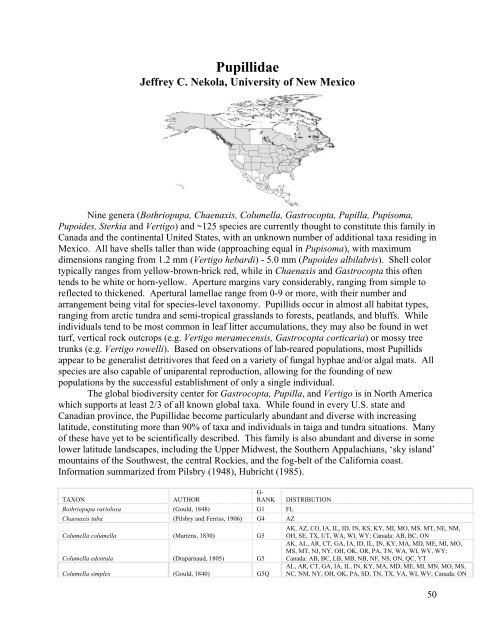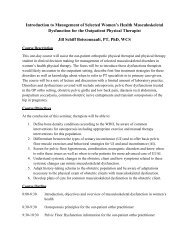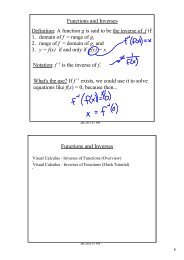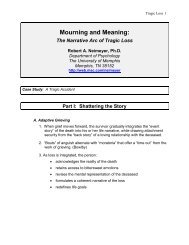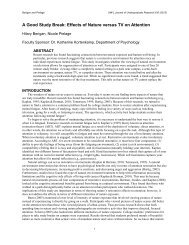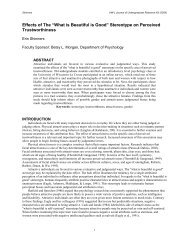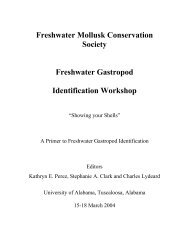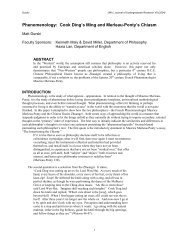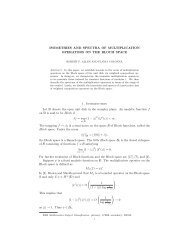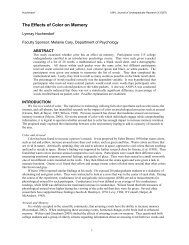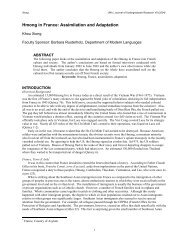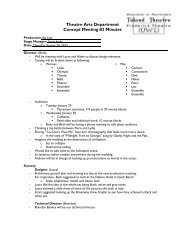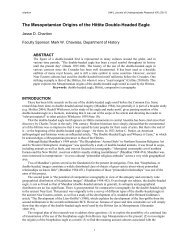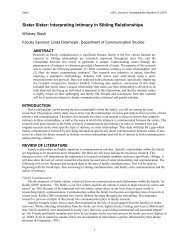A Guide for Terrestrial Gastropod Identification - University of ...
A Guide for Terrestrial Gastropod Identification - University of ...
A Guide for Terrestrial Gastropod Identification - University of ...
Create successful ePaper yourself
Turn your PDF publications into a flip-book with our unique Google optimized e-Paper software.
Pupillidae<br />
Jeffrey C. Nekola, <strong>University</strong> <strong>of</strong> New Mexico<br />
Nine genera (Bothriopupa, Chaenaxis, Columella, Gastrocopta, Pupilla, Pupisoma,<br />
Pupoides, Sterkia and Vertigo) and ~125 species are currently thought to constitute this family in<br />
Canada and the continental United States, with an unknown number <strong>of</strong> additional taxa residing in<br />
Mexico. All have shells taller than wide (approaching equal in Pupisoma), with maximum<br />
dimensions ranging from 1.2 mm (Vertigo hebardi) - 5.0 mm (Pupoides albilabris). Shell color<br />
typically ranges from yellow-brown-brick red, while in Chaenaxis and Gastrocopta this <strong>of</strong>ten<br />
tends to be white or horn-yellow. Aperture margins vary considerably, ranging from simple to<br />
reflected to thickened. Apertural lamellae range from 0-9 or more, with their number and<br />
arrangement being vital <strong>for</strong> species-level taxonomy. Pupillids occur in almost all habitat types,<br />
ranging from arctic tundra and semi-tropical grasslands to <strong>for</strong>ests, peatlands, and bluffs. While<br />
individuals tend to be most common in leaf litter accumulations, they may also be found in wet<br />
turf, vertical rock outcrops (e.g. Vertigo meramecensis, Gastrocopta corticaria) or mossy tree<br />
trunks (e.g. Vertigo rowelli). Based on observations <strong>of</strong> lab-reared populations, most Pupillids<br />
appear to be generalist detritivores that feed on a variety <strong>of</strong> fungal hyphae and/or algal mats. All<br />
species are also capable <strong>of</strong> uniparental reproduction, allowing <strong>for</strong> the founding <strong>of</strong> new<br />
populations by the successful establishment <strong>of</strong> only a single individual.<br />
The global biodiversity center <strong>for</strong> Gastrocopta, Pupilla, and Vertigo is in North America<br />
which supports at least 2/3 <strong>of</strong> all known global taxa. While found in every U.S. state and<br />
Canadian province, the Pupillidae become particularly abundant and diverse with increasing<br />
latitude, constituting more than 90% <strong>of</strong> taxa and individuals in taiga and tundra situations. Many<br />
<strong>of</strong> these have yet to be scientifically described. This family is also abundant and diverse in some<br />
lower latitude landscapes, including the Upper Midwest, the Southern Appalachians, ‘sky island’<br />
mountains <strong>of</strong> the Southwest, the central Rockies, and the fog-belt <strong>of</strong> the Cali<strong>for</strong>nia coast.<br />
In<strong>for</strong>mation summarized from Pilsbry (1948), Hubricht (1985).<br />
TAXON AUTHOR<br />
G-<br />
RANK DISTRIBUTION<br />
Bothriopupa variolosa (Gould, 1848) G1 FL<br />
Chaenaxis tuba (Pilsbry and Ferriss, 1906) G4 AZ<br />
Columella columella (Martens, 1830) G5<br />
Columella edentula (Draparnaud, 1805) G5<br />
Columella simplex (Gould, 1840) G5Q<br />
AK, AZ, CO, IA, IL, ID, IN, KS, KY, MI, MO, MS, MT, NE, NM,<br />
OH, SE, TX, UT, WA, WI, WY; Canada: AB, BC, ON<br />
AK, AL, AR, CT, GA, IA, ID, IL, IN, KY, MA, MD, ME, MI, MO,<br />
MS, MT, NJ, NY, OH, OK, OR, PA, TN, WA, WI, WV, WY;<br />
Canada: AB, BC, LB, MB, NB, NF, NS, ON, QC, YT<br />
AL, AR, CT, GA, IA, IL, IN, KY, MA, MD, ME, MI, MN, MO, MS,<br />
NC, NM, NY, OH, OK, PA, SD, TN, TX, VA, WI, WV; Canada: ON<br />
50


